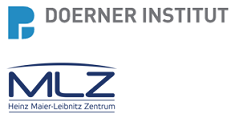Speaker
Description
Within this talk, the technique of Small- and Wide-Angle X-ray Scattering (SAXS/WAXS) will be introduced in the context of nanostructure characterization of heritage objects especially of written artefacts or paintings.
The object of interest of the presented study is a fifteenth-century heritage object namely a set of 65 Tibetan ritual cards (tsakali) from a private collection. The obtained results of the 2D scanning SAXS/WAXS measurements of selected cards performed at the SAXSMAT beamline at DESY will be shown. In particular, the ability to use the diffraction signal (WAXS) to identify pigments will be highlighted. The aim is to better understand the provenance, molecular composition as well as the making and deterioration processes of that collection. Especially, if the collection has been made by one artist, is it one collection or is it composed of several sub-collections? Are there hidden layers underneath the visible painting of the tsakali cards? These are only a few research questions that can be answered partially by the analysis of the X-ray scattering patterns.
The selected showcases will highlight the potential of using SAXS and WAXS methods in the structural analysis of heritage objects in the field of archaeology and art and should also foster further development of using X-ray-based scattering techniques in that research field complementary to the well-established X-ray fluorescence technique.

